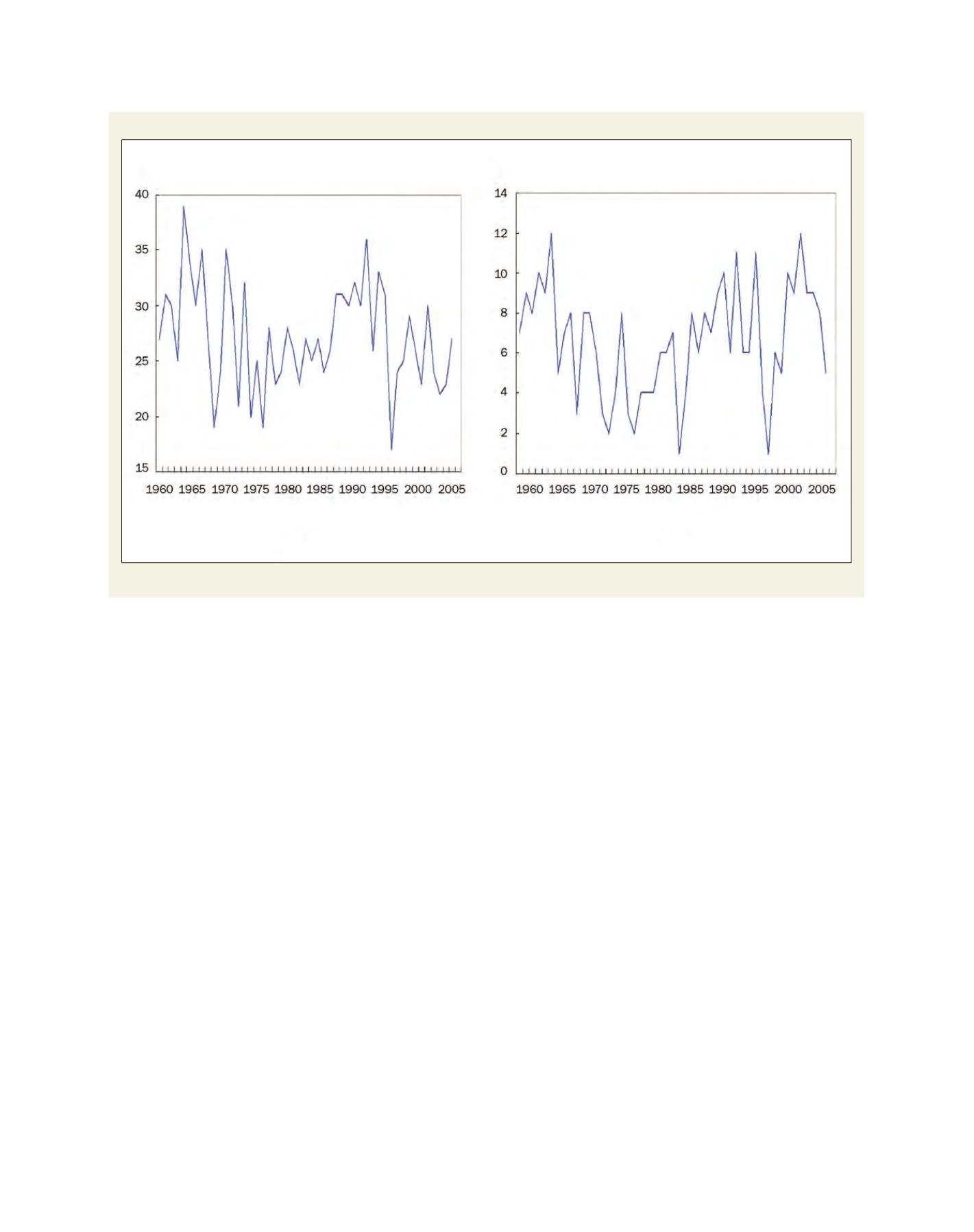

[
] 156
O
bserving
, P
redicting
and
P
rOjecting
c
limate
c
OnditiOns
so that any increase in thermodynamic energy due to
global warming will have a minimal or undetectable
effect. On the other hand, changes in the dynamic
conditions are crucial in determining whether a TC
can continue intensifying, and variations of such
dynamic conditions have not been found to have a
similar trend as that of air or ocean temperature. For
this reason, no detectable trend in TC activity in the
western North Pacific can be identified.
Projections for the future
Many climate models have been run to project
what might happen to TC activity in various ocean
basins under different global warming scenarios but
the results are far from consistent. In the western
North Pacific, some have projected a decrease in
frequency
10
while others suggest an increase.
11
For
intense typhoons, a similar diversity in results is also
found.
One major problem with many of these models is
the relatively coarse resolution. This means that the
vortices simulated in the models are not quite the
same as those in the real atmosphere. To obtain more
realistic simulations requires a higher resolution,
which can either be accomplished using a variable
resolution model
12
or downscaling studies.
13
Through
these various methods, better projections of TC activ-
ity should be possible.
quality of the satellite pictures was quite poor so that it could
be difficult at times to estimate the actual intensity of the TC
when no aircraft reconnaissance was available. The numbers
prior to the mid 1970s are therefore likely to be underestimates
of the actual values.
Nevertheless, even given these limitations, it is clear from
the graphed time series that the number of TCs goes through
large variations on both interannual and inter-to multi-decadal
timescales, with maxima in the 1960s and 1990s and minima in
the mid 1970s and late 1990s. The variation in the number of
intense typhoons goes through similar cycles, which are found
to be related to variations in the atmospheric and oceanographic
conditions with similar periods.
6
It is also important to note from
the graphed data that since the mid 1990s, the number of TCs and
of intense typhoons has generally been on a decrease, which is in
contrast to a continued increase in air and ocean temperatures. A
reconstruction of the intense typhoon time series based purely on
satellite re-estimates gives very similar results.
7
Intuitively, an increase in ocean temperature as a result of global
warming should lead to more energy available for convection in
the atmosphere, which should therefore provide more fuel for a
TC to develop. However, TC formation and intensification do not
depend on thermodynamic conditions such as ocean tempera-
ture or moisture availability alone. Rather, dynamic conditions
such as horizontal and variation of winds are also important. In
fact, as demonstrated by Chan and Liu
8
and Chan
9
, the thermo-
dynamic conditions for TC formation and intensification in the
western North Pacific are generally sufficient throughout the year
Annual number of tropical storms and typhoons in the western North Pacific Ocean
Annual number of tropical storms and typhoons (left), and Category 4 and 5 typhoons (right) in the western North Pacific Ocean during the period 1960-2008
Source:
US Joint Typhoon Warning Center
dataset
















